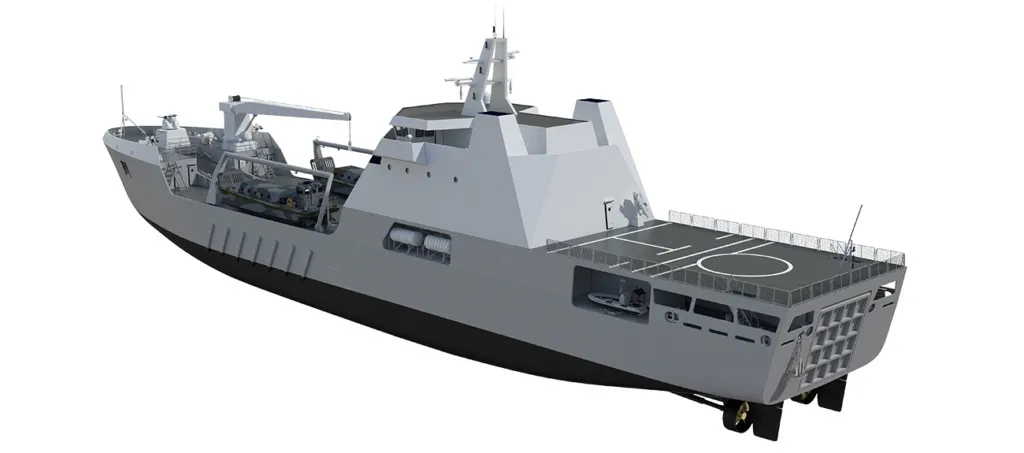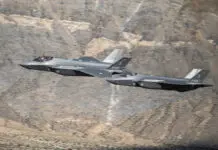With the upcoming arrival of the French National Navy’s Jeanne d’Arc 2024 mission to South America, consisting of the amphibious helicopter carrier Tonnerre L9014 and the frigate Guépratte of the La Fayette class, the conduct of amphibious exercises with the Navies of Brazil (Belém and Rio de Janeiro) and Chile (Valparaíso) brings to light the absence of an amphibious ship within the fleet of the Argentine Navy.
Since the decommissioning in 1997 of the tank landing ship ARA Cabo San Antonio (Q-42), the capability for amphibious deployment and transport has been severely limited, as the unit was retired without replacement. The need to have a vessel dedicated specifically to troop and equipment transport to an operational zone within the framework of an amphibious landing can be supplemented with subsidiary missions such as community support in humanitarian aid missions.
Whether it be an LPD (Landing Platform Dock) or LST (Landing Ship Tank), having at least one unit of this class will restore to the Marine Infantry Amphibious Brigade a platform that can provide a minimal capability for projection along the national maritime coastline. According to its origins, the Marine Infantry was created as an amphibious element, part of the then Navy, capable of acting along the coast, projecting power from sea to land, composed of units from various arms necessary for the fulfillment of its mission.


In this regard, Argentina operated various LST units acquired as surplus from the United States throughout the 1950s and 1960s. A total of 14 LST ships were alongside Landing Craft Infantry (LCI) and Landing Ship Medium (LSM).
Changes in naval doctrine necessitated new landing maneuvers, highlighting the importance of having ships with floodable docks that allow for landing at a greater distance from the beachhead, avoiding being easy targets for enemy action. This technological leap came with the incorporation of the LSD Ashland Class ARA Cándido de Lasala (Q-43), formerly USS Gunston Hall (LSD-5).
This ship was acquired in 1970 and served until 1981, with a displacement of 7,930 tons and an aft dock capable of landing amphibious vehicles. Subsequently, in 1978, the LST ARA Cabo de San Antonio was incorporated, locally built at AFNE – Astillero Rio Santiago, based on the De Soto County Class of the U.S. Navy.
After the retirement of the Cabo San Antonio, amphibious operations fell on the ARA Bahía San Blas (B-4) transport and the Destroyer Hércules (former D-1, current B-52). This ship was modified from being a Type 42 Missile Destroyer to a Fast Troop Transport Ship. Among the modifications it underwent: a new platform for helicopter operations, a hangar capable of housing two Sea King helicopters, and the removal of the Sea Dart anti-aircraft missile system to accommodate Zodiac-type inflatable boats and marine infantry.
Amphibious capability: Brazil, Chile, and Peru’s options
Over the last decade, the region has advanced by incorporating new capabilities regarding amphibious ships. In the case of the Chilean Navy, in 2011, it incorporated the amphibious assault ship Foudre Class Sargento Aldea (LSDH-91). Unlike its predecessor, the Valdivia, belonging to the Newport class of the U.S. Navy, the Sergeant Aldea has an hangar from which AS332L Super Puma helicopters can be deployed for air assault, in addition to being able to transport 450 troops, and up to 900 on short trips with their corresponding amphibious equipment.
Moreover, the neighboring country has been advancing in recent years with the Escotillón Project, through which it will provide its navy with new multipurpose ships to enhance the capabilities of its Marine Infantry. Currently being built by ASMAR, their incorporation aims to replace the AP-41 Aquiles and the Batral class barges to be one of the operational cores of the Expeditionary Amphibious Brigade (BAE) of the Chilean Navy.
Brazil, on the other hand, opted for a similar option by incorporating the second ship of the Foudre Class, named “Bahia” (G40). With this addition, Brazil strengthened its naval projection capability, employing it as a tool to support its foreign policy. The Bahia was deployed in the Peace Mission in Haiti thanks to its Field Hospital and used in logistical transportation tasks, playing a prominent role during the Covid-19 pandemic. This unit was complemented in 2018 with the incorporation of the LPH “Atlântico” (Former HMS Ocean).



Unlike Brazil and Chile, Peru opted for a longer route to incorporate an LPD-type ship. Through the local shipyard SIMA (Servicios Industriales de la Marina S.A.), the Peruvian Navy chose the Makassar Class, a design belonging to the Dedo Shipbuilding & Engineering shipyards. The first unit, the BAP Pisco (AMP-156), was delivered to the Peruvian Navy in June 2018, while its twin, the BAP Paita, is still under construction.
The Argentine Navy’s initiative for construction in Argentine shipyards
In recent years, the Argentine Navy has opted to advance a project contemplating the local construction of two units (an LPD and LST) with the participation of the Rio Santiago (ARS) and Tandanor shipyards. According to what has been previously reported, one of the options considered focuses on certain technical characteristics: the ship will have a length of about 100 meters, a beam of 16 meters, a draft of 7.75 meters, a speed of 16 knots, and a range of 4000 nautical miles or 15 days of operation. Upon the release of these requirements, sources confirmed to Zona Militar that indeed the type of ship being negotiated corresponds to the LST 100 type of the DAMEN shipyard.


However, in the interest of having both an LST and an LPD, the proposal from the Dutch shipyard Damen with its LST competes with the LPDs of the Makassar class, designed by Daewoo. Clearly, the LST is a smaller system with different functionalities from those of an LPD, the latter being a larger displacement ship with capabilities for conducting amphibious force projection missions towards the coast, helitransport operations, supply loading, hospital ship, support ship, among others.
Almost three decades after losing this capability, the Argentine Navy must have means commensurate with its mission, at least similar to those being incorporated in the region.
You may also like: The rapprochement between Argentina and the U.S. could be reflected in a greater exchange between their special operations units










